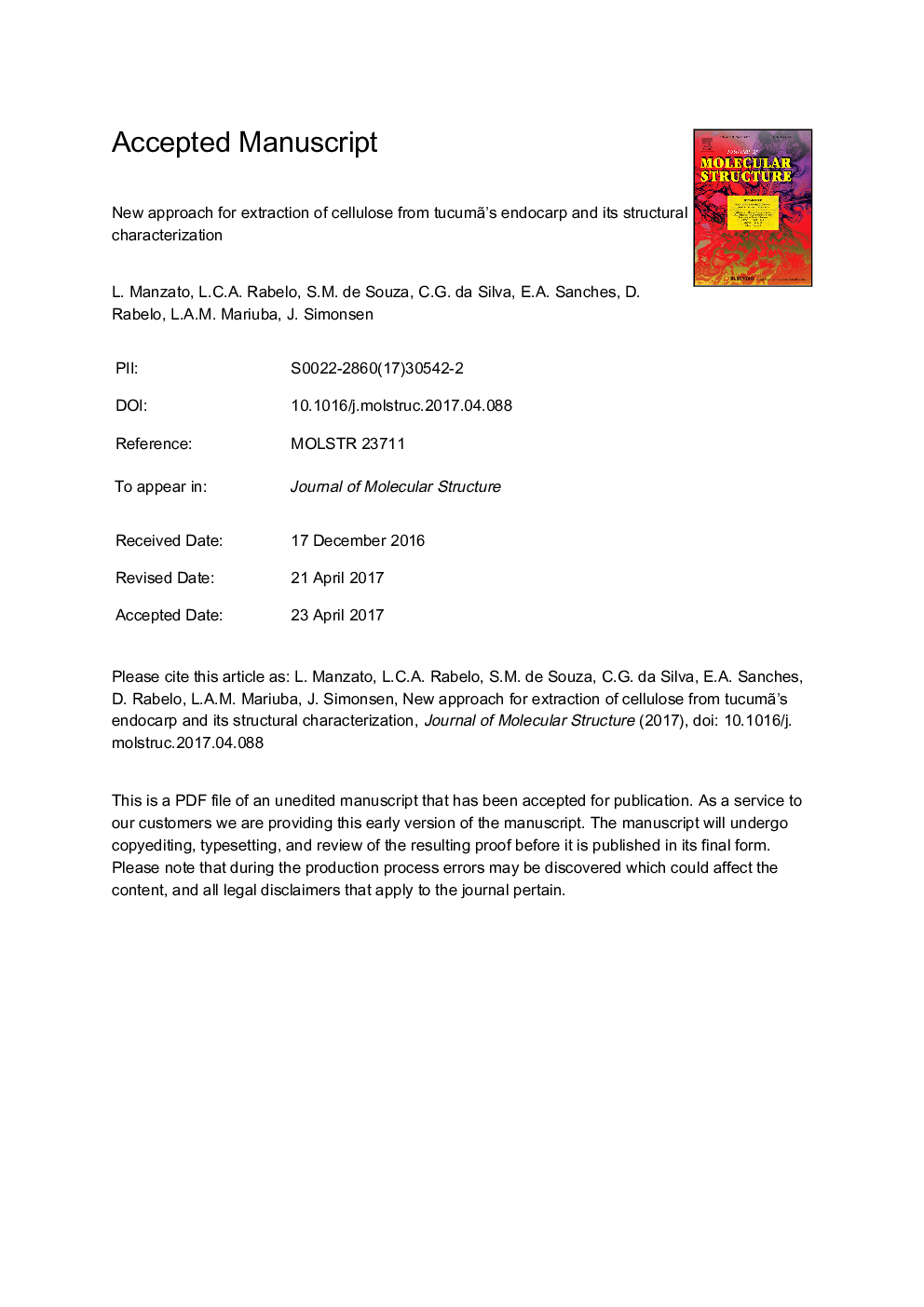| کد مقاله | کد نشریه | سال انتشار | مقاله انگلیسی | نسخه تمام متن |
|---|---|---|---|---|
| 5160803 | 1501674 | 2017 | 28 صفحه PDF | دانلود رایگان |
عنوان انگلیسی مقاله ISI
New approach for extraction of cellulose from tucumã's endocarp and its structural characterization
دانلود مقاله + سفارش ترجمه
دانلود مقاله ISI انگلیسی
رایگان برای ایرانیان
موضوعات مرتبط
مهندسی و علوم پایه
شیمی
شیمی آلی
پیش نمایش صفحه اول مقاله

چکیده انگلیسی
The recycling of plant wasted materials into useful products represents a green alternative to prevent environmental problems. Tucumã palm fruit (Astrocaryum aculeatum Meyer) is widely used in Amazon region for food and crafts. Due to the large amount of wasted Tucumã's endocarp, this work proposes a new approach for extraction of cellulose and its structural characterization. X-ray Diffraction (XRD), Rietveld Refinement, Scanning Electron Microscopy (SEM), Infrared-transform Fourier Spectroscopy (FTIR) and Thermal Analysis (TG/DSC) have been used for characterization of the extracted cellulose. XRD patterns of the in natura tucumã's endocarp has showed a natural crystalline content embedded in a non-crystalline matrix. Nanocrystals of cellulose have been observed in the XRD pattern of the extracted cellulose, showing a good agreement with type II. Rietveld refinement allowed the cell parameters obtainment (a = 8.43(1) Ã
, b = 9.50(1) Ã
, c = 9.39(3) Ã
and γ = 118.43(4)°). Apparent average crystallite size and microstrain were, respectively, 20.0 Ã
and 0.1%. Two different methods were applied for estimative of crystallinity percentage. In the first method the height ratio between the intensity of the crystalline peak and the total intensity after the subtraction of the non-crystalline content was applied, leading to 48.5%. The second approach was performed using the amorphous area and the total area of the (1 1 0) peak from the experimental diffractogram, leading to 31.5%. The difference in crystallinity percentage concerning these two used approaches may be explained due to the first method does not consider the broad peaks resulted from nanocrystals diffraction. FTIR spectroscopy has evidenced a cellulose type II structure. SEM images showed micrometric sized fibers with ranged thicknesses. However, a new morphology of spherical nanostructures was observed on the type II matrix fibers. Thermal analysis suggests that the extracted cellulose have low thermal stability, which resulted from poor ordered, packed chains. A large exothermic band was found in DSC curve and associated to the release of energy from the amorphous phase degradation. Thus, this work successfully extracted cellulose from tucumã's endocarp and allowed its structural, morphological and thermal characterization.
ناشر
Database: Elsevier - ScienceDirect (ساینس دایرکت)
Journal: Journal of Molecular Structure - Volume 1143, 5 September 2017, Pages 229-234
Journal: Journal of Molecular Structure - Volume 1143, 5 September 2017, Pages 229-234
نویسندگان
L. Manzato, L.C.A. Rabelo, S.M. de Souza, C.G. da Silva, E.A. Sanches, D. Rabelo, L.A.M. Mariuba, J. Simonsen,